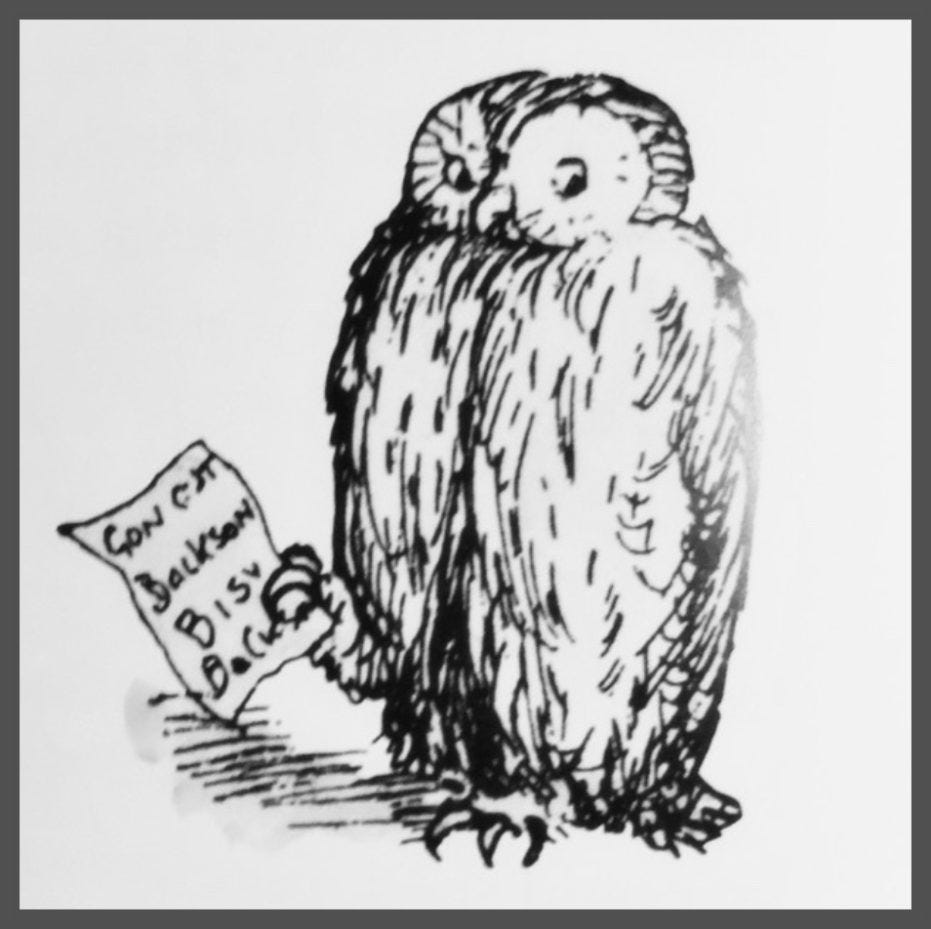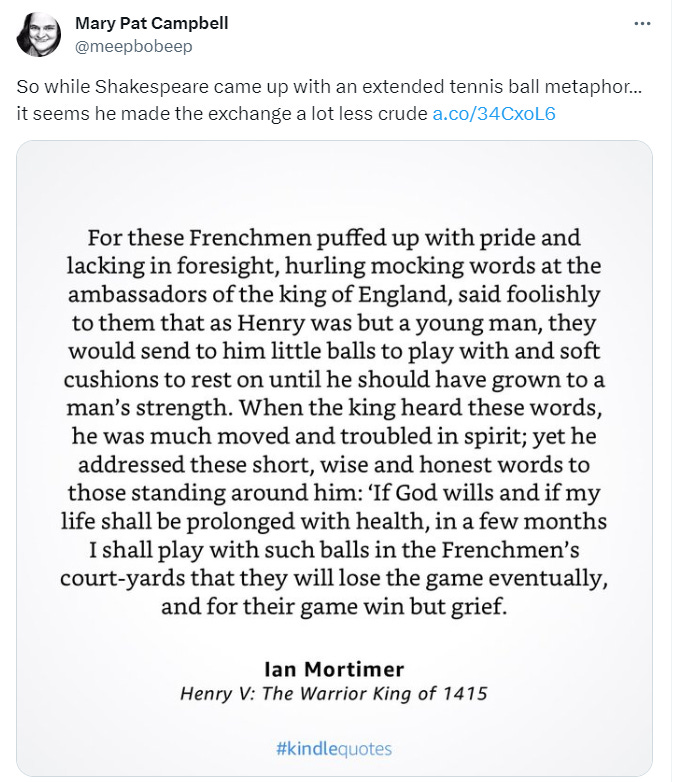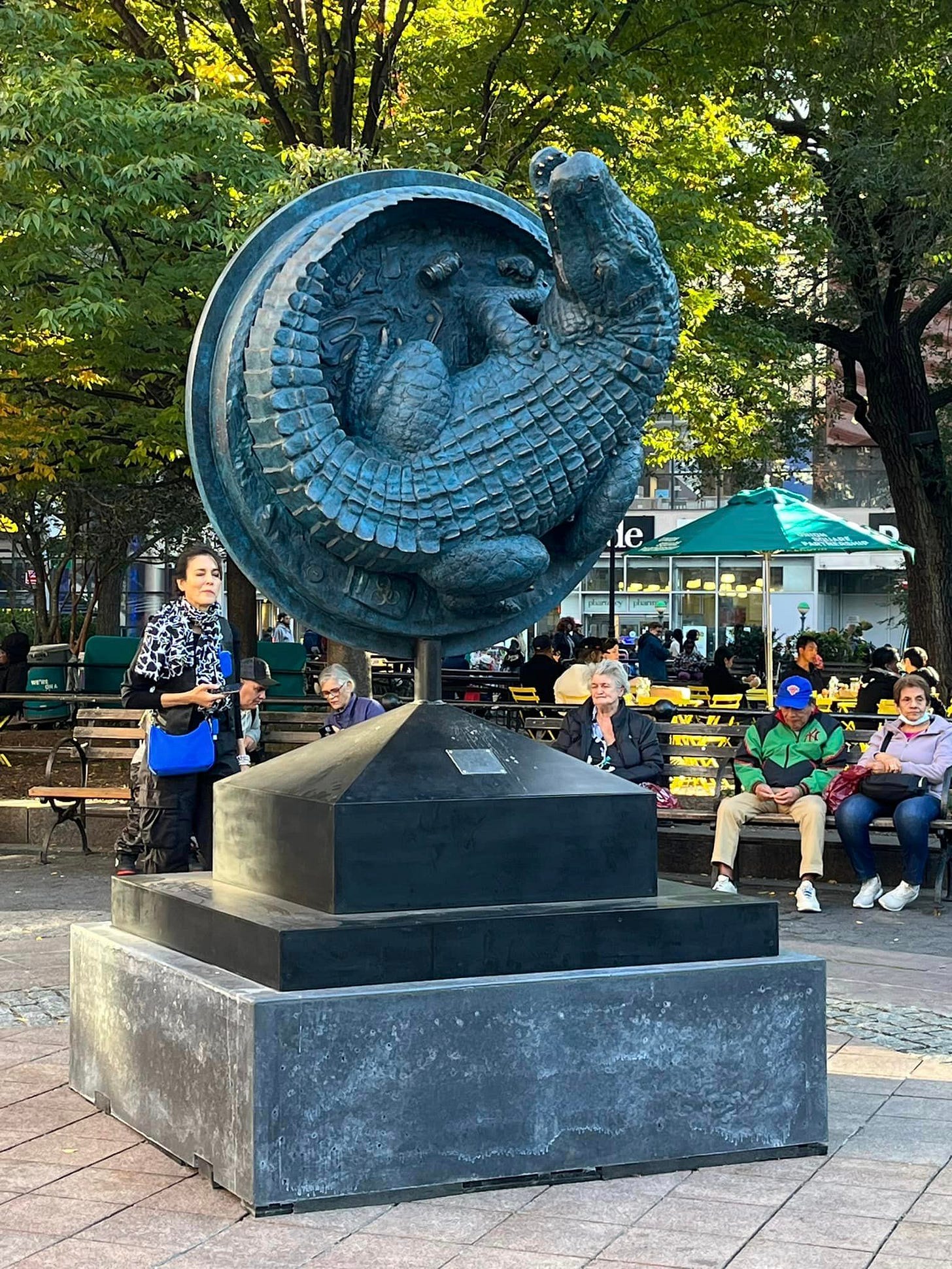The Week in Meep, 28 Oct 2023: Newsweek, St. Jude, Tennis Balls, and CHUD
I'm tired. So very tired.
Bin bisy.
Quoted in Newsweek on Excess Mortality
Newsweek: Why Are Death and Disability Rising Among Young Americans? | Opinion by Dr. Pierre Kory, M.D. and Mary Beth Pfeiffer
This post-pandemic scourge can be ferreted out in a U.S. Centers for Disease Control online database called WONDER. Mary Pat Campbell, an actuarial expert, unearthed distressing trends in the data.
At COVID-19's peak, the vast majority of excess deaths were among the elderly and immune-compromised. But as COVID became milder, Campbell found unprecedented increases in death rates—from all causes, not just COVID—in prime-of-life adults compared with 2019. In early 30-somethings, for example, mortality ran 42 percent above normal in 2021, 30 percent in 2022, and 24 percent from January to May 2023, long after the COVID emergency ended.
"Thirty percent is a huge increase in mortality," Campbell explained. "Ten percent is huge. A lot of people just have no idea." Her findings mirror ongoing excess deaths tracked in the U.S. and other countries by the Organisation for Economic Co-operation and Development. A U.S. Society of Actuaries report from May 2023 also found ongoing, unexpectedly high deaths in working people with life insurance—which it concluded could not be explained by COVID alone. (COVID deaths dropped by half from 2021 to 2022.)
I bolded it in case you missed it. More at Newsweek.
I will do a post on this later, with a few graphs.
Happy Feast Day of Saints Jude and Simon!
Sorry, Simon, you’re going to get short shrift as usual.
First, a delightful podcast with a drink for the saint of today, and some information as to how the devotion to St. Jude as patron of desperate causes really took off.
So I don’t want to steal their thunder, but there is a bit about Danny Thomas and his founding of the St. Jude Children’s Research Hospital:
More than 70 years ago, Danny Thomas was a young entertainer with a baby on the way. Work wasn't easy to come by, and his despair grew. He turned to St. Jude Thaddeus, the patron saint of hopeless causes, and vowed:
Show me my way in life, and I will build you a shrine.
As you may know, the primary focus of research of St. Jude Children’s Research Hospital is pediatric cancer. It was founded in 1962, and my data from CDC WONDER goes back only to 1968, but check this out:
They’re all on top of each other, more or less. This pattern differs hugely from the adult cancer trends.
In any case, pediatric cancer mortality has decreased by over 60% since 1968.
Pretty sweet!
I was looking for a particular picture of our parish priest Fr. Jude (who said Mass this morning, and who baptized my son, did First Communion for my oldest child, etc.) but I can’t find it.
In lieu of Fr. Jude, here is a lineup of some of my church’s statues, which includes one of St. Jude:

Henry V, Easter Eggs and Tennis Balls
I’m reading an interesting book on Henry V in 1415, preparing to invade France (and I’m only up to March 26 or so.)
Henry V: The Warrior King of 1415 takes its brief quite literally — the author goes through the year day-by-day, attempting to capture the events of each day by looking at royal records, especially that of the exchequer. What money was disbursed, to whom, and for what purpose?
But there were a few other things:
That was just in passing — there are loads of references to the actual religious practices of the time. Because of the Reformation, Counter-Reformation, etc. etc. many of the old Church practices had long worn away before Vatican II. Many people forgot just how much was involved in the old Lenten fasts. Our current version is really not that harsh.
Okay, this one surprised me. I thought Shakespeare had completely made up the tennis ball insult.
The book goes farther into it, in that it was unlikely that a large barrel of balls was sent, but that there were probably only words exchanged between diplomats, and it was a diplomatic insult. Henry V was already preparing for war, and he was looking for all the excuses to start one.
But I do find it fascinating, because there was more maneuvering than I was aware of, mainly to keep other players off the field, so that they would not come to the aid of France. As well, there was the issue of three (supposed) Popes simultaneously, one of which was notoriously corrupt (and is not numbered of the many Popes John… considered an Antipope), and the initial sputterings of heresy that would break out into the Protestant Reformation 100 years later.
A Visit to the City
I went into Manhattan to do a few things, and Stuart told me to go to Union Square to find a particular sculpture, and find it I did:
The sculpture has a website: https://www.nyc-legend.com/
Alligators aren’t native to New York, but stories of their subterranean lives date back over a century. The first published stories of this cycle came from Teddy May, New York’s Commissioner of Sewers, who claimed in newspaper interviews that the gators had been spotted by inspectors and later eradicated by flooding the tunnels. May’s eventual New York Times obituary even mentioned that he had “led a squad in clearing the sewers of a number of live alligators that, discarded in the sewers as tiny pets, had survived and grown large.” Despite May’s efforts to close the book on these stories, they only grew wilder. Many involved gargantuan albino alligators, since it was believed that the lack of sunlight would rob the animals of pigment. From Thomas Pynchon’s first novel, V, to the 1980 horror film Alligator, the creatures also found themselves increasingly cemented in popular culture, and all the while stories of sightings continued. As recently as 2010, a 2-foot gator was caught by the NYPD in a Queens sewer. With each sighting, its status is reinforced—a timeless icon underneath a changing city. ”
And yes, there is a Wikipedia article for Sewer Alligators. In my title, I expanded the concept to “things living in the sewers” more broadly, such as the awful horror movie C.H.U.D.
Ah, the 1980s.
Watch where you walk!
Spreadsheet for Pediatric Cancer Deaths











Dear Mary Pat,
The Great Richard Thompson, an absolute treature of a musician, performed/toured a show back in 2000 titled "1,000 Years of Popular Music". You can read about the genesis of the show, but suffice to say he played songs from the year ~800 up to the present day.
One early pop hit was about Young King Henry and the King of France. According to TGRT, the song was "collected" -- i.e. recorded and documented -- in US Appalacia in the 1930's. "People still singing about tennis balls and ancient battles, some 600 years later, very strange...<WINK>"
This YouTube link should be cued up to the song itself. The whole evening is fantastic, btw:
https://youtu.be/DDZdU-snqTs?t=470
Great to see you're getting recognized by the main stream media! I'm glad they have found a source we can all trust!